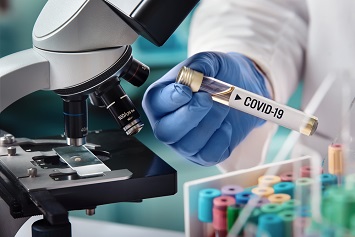The Occupational Safety and Health Administration (OSHA) has issued guidance on preparing workplaces for a COVID-19 outbreak. The guide explains how COVID-19 could affect workplaces and steps employers can take to reduce workers’ risk of exposure.
COVID-19 is a respiratory disease caused by a novel Coronavirus, also referred to as “the SARS-CoV-2 virus,” first identified in Wuhan City, China, in December 2019.
“This guidance outlines practical ways that employers and workers can address potential health risks from the coronavirus in their workplaces,” Principal Deputy Assistant Secretary for Occupational Safety and Health Loren Sweatt said in an agency statement.
OSHA urged employers to prepare immediately for potential outbreaks, as a failure to make business continuity plans may leave employers without sufficient resources or adequately trained employees during a swiftly moving outbreak.
OSHA’s recommendations resemble guidance for businesses and employers issued by the Centers for Disease Control and Prevention (CDC).
OSHA recommended all employers take steps such as:
- Developing an infectious disease prevention and response plan and staying abreast of guidance from federal, state, local, tribal, and/or territorial health agencies;
- Using social distancing, staggered work shifts, downsizing operations, delivering services remotely, and other measures such as telecommuting to reduce employee exposures;
- Cross-training workers to continue operations in the event of employee absences and preparing for supply-chain interruptions;
- Encouraging proper cough and sneeze etiquette and frequent and thorough hand washing, as well as developing policies and procedures for promptly identifying and isolating sick employees; and
- Maintaining regular housekeeping practices, including routine cleaning and disinfecting of surfaces and equipment in the work environment.
OSHA also encouraged employers to implement flexible sick leave policies, not require a healthcare provider’s note for employees who are sick with acute respiratory symptoms to validate their illness or to return to work, and permit employees to stay home to care for a sick family member.
OSHA’s planning guidance relies upon traditional infection control and industrial hygiene practices.
The agency acknowledged there is no standard that specifically covers COVID-19 exposures. However, the General Duty Clause (Section 5(a)(1) of the Occupational Safety and Health Act of 1970) may apply. The statute requires employers to ensure on-the-job conditions are free of serious hazards that can cause death, illness, or injury. The bloodborne pathogens and personal protective equipment standards also apply in certain circumstances.
Certain jobs have very high exposure risks, including:
- Healthcare workers, such as doctors, nurses, dentists, paramedics, and emergency medical technicians who perform aerosol-generating procedures like intubation, cough induction procedures, bronchoscopies, some dental procedures and exams, or invasive specimen collection on known or suspected COVID-19 patients;
- Healthcare or laboratory workers collecting or handling specimens from known or suspected COVID-19 patients; and
- Morgue workers performing autopsies that involve aerosol-generating procedures on the bodies of people who are known to have, or suspected of having, COVID-19 at the time of their death.
Upcoming Webinar
Coronavirus: Business Continuity Action Plan Development and Emergency Response Protocols
April 10, 2020
2:00 p.m. to 3:00 p.m. Eastern / 11:00 a.m. to 12:00 p.m. Pacific
Presented by Nita Beecher, Esq. and Lucien G. Canton, CEM
Workers with high exposure risks include those transporting patients in ambulances, mortuary workers making burial or cremation preparation of the bodies of people known or suspected of having COVID-19, and healthcare delivery and support tasks. Workers in schools, retail, or other high-population-density work environments where there is ongoing community transmission face medium exposure risks. Workers with minimal contact with the public or other coworkers are at low risk.
Precautions for jobs with high or very high exposure risks include:
- Engineering controls like isolation rooms, appropriate air-handling systems for healthcare facilities, autopsy suites with isolation controls, and Biosafety Level 3 protections for handling laboratory specimens;
- Administrative controls like grouping COVID-19 patients together when single rooms are not available, posting signs requesting patient or family members immediately report respiratory symptoms and wear facemasks, enhanced medical monitoring of workers during an active outbreak, and training and psychological support for workers;
- Safe work practices like providing alcohol-based hand rubs containing at least 60% alcohol for decontamination to emergency responders and other workers in the field; and
- Personal protective equipment (PPE) such as gloves, a gown, face shield or goggles, and respirator.
Workers who dispose of contaminated PPE and infectious waste also must be provided appropriate PPE.
Protections for workers at medium risk include engineering controls like clear plastic sneeze guards where feasible, administrative controls like having ill customers or employees where facemasks, limiting public access where possible, and considering strategies like drive-through windows, communication by telephone, and telework to minimize face-to-face contact. Hazard controls for medium risk may even extend to providing PPE.
Continuity risks posed by an outbreak may include employee absenteeism, interruptions in supply chains, or changes in commerce, where more customers shop at off-peak hours or express interest in delivery services.

